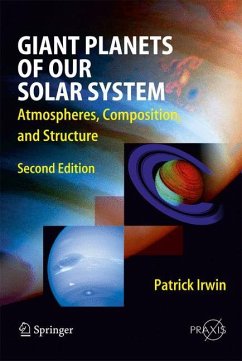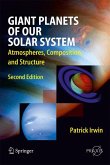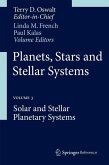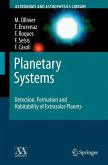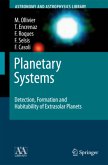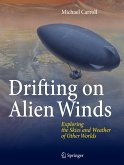This book reviews the current state of knowledge of the atmospheres of the giant gaseous planets: Jupiter, Saturn, Uranus, and Neptune. The current theories of their formation are reviewed and their recently observed temperature, composition and cloud structures are contrasted and compared with simple thermodynamic, radiative transfer and dynamical models. The instruments and techniques that have been used to remotely measure their atmospheric properties are also reviewed, and the likely development of outer planet observations over the next two decades is outlined.
This second edition has been extensively updated following the Cassini mission results for Jupiter/Saturn and the newest ground-based measurements for Uranus/Neptune as well as on the latest development in the theories on planet formation.
This second edition has been extensively updated following the Cassini mission results for Jupiter/Saturn and the newest ground-based measurements for Uranus/Neptune as well as on the latest development in the theories on planet formation.
"Irwin [...] has done an outstanding job of presenting material geared to upper-division undergraduates and beginning graduate students." (J.R. Kraus (University of Denver), Choice Feb. 2004)
From the reviews of the second edition:
"The atmospheres of the four major outer planets involves somewhat different physical processes ... . present a summary of current scientific knowledge of both the structure and the dynamics of these atmospheres, moving from the nature of the core to the details of the transfer of radiation and energy in the atmospheres. ... The presentation is made more understandable by Irwin's thoughtful word descriptions of the relevant theoretical considerations and by the useful illustrations. ... Summing Up: Highly recommended. Graduate students, researchers/faculty, and professionals." (D. E. Hogg, Choice, Vol. 46 (11), 2009)
From the reviews of the second edition:
"The atmospheres of the four major outer planets involves somewhat different physical processes ... . present a summary of current scientific knowledge of both the structure and the dynamics of these atmospheres, moving from the nature of the core to the details of the transfer of radiation and energy in the atmospheres. ... The presentation is made more understandable by Irwin's thoughtful word descriptions of the relevant theoretical considerations and by the useful illustrations. ... Summing Up: Highly recommended. Graduate students, researchers/faculty, and professionals." (D. E. Hogg, Choice, Vol. 46 (11), 2009)

